
Library Dewey Decimal System Flowers Pinterest Dewey decimal classification, Chart and School
The Dewey Decimal system and the Library of Congress system, mentioned below, are the classification schemes most frequently used in North American libraries. The Universal Decimal system The Universal Decimal Classification, published in 1905 and preferred by scientific and technical libraries, was an immediate offspring of the Dewey system.
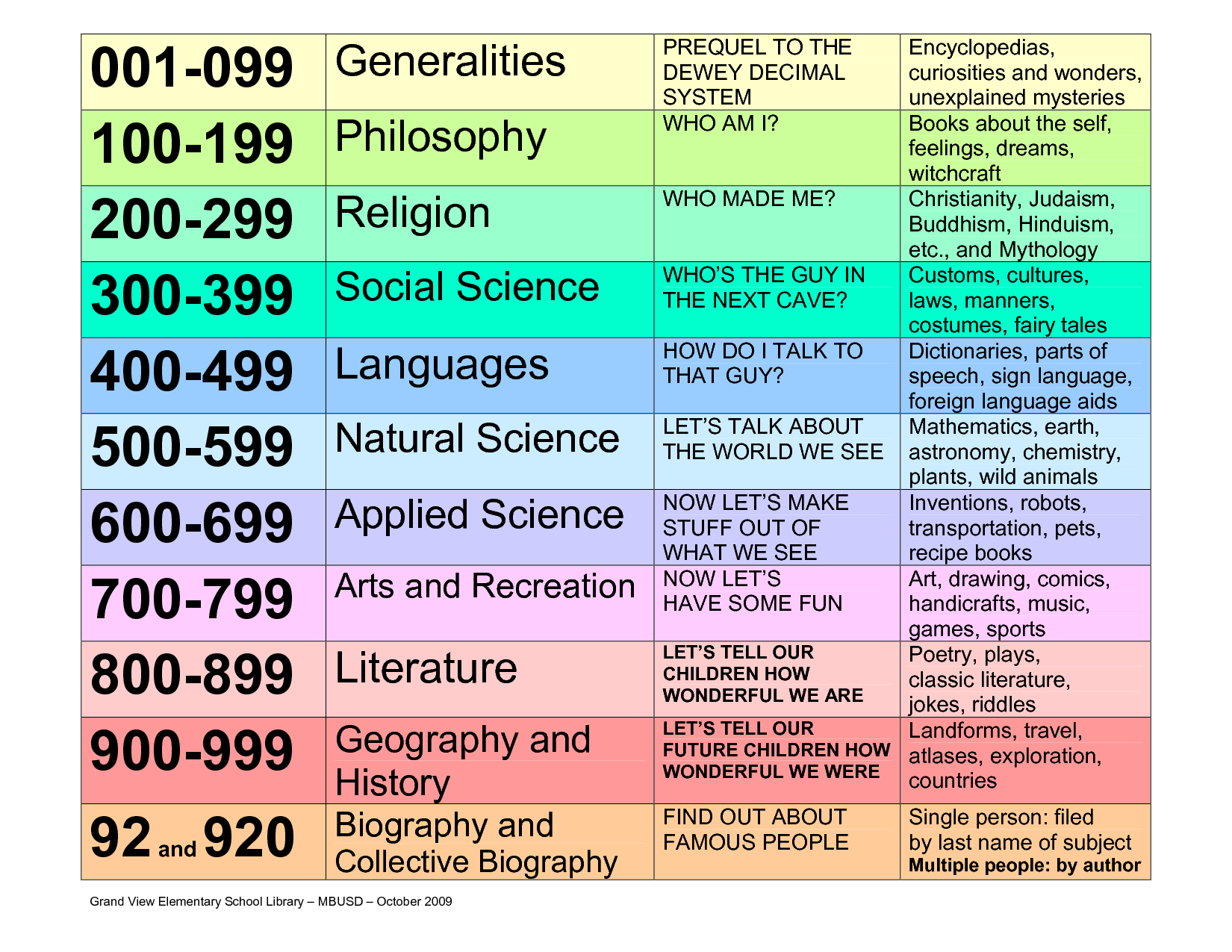
Dewey Decimal System PNG Transparent Dewey Decimal System.PNG Images. PlusPNG
Dewey Decimal System - A Guide to Call Numbers. To learn more about what the parts of a book's call number mean, take a look at Finding Books with Library of Congress and Dewey Call Numbers. Overview. 000 Generalities 100 Philosophy & psychology 200 Religion 300 Social sciences
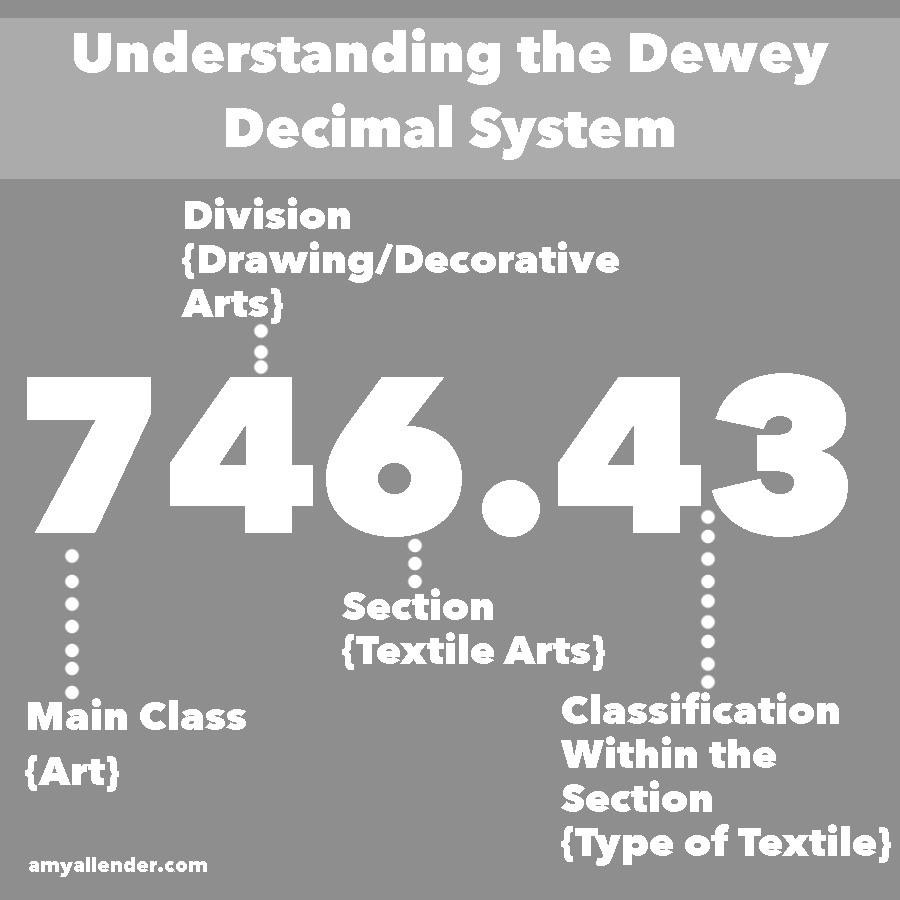
Mr. Dewey amy allender {dot} com
The Dewey Decimal System is also called Dewey Decimal Classification, Dewey, and DDC. Dewey Decimal Classification was created in 1876 by Melvil Dewey. Before the DDC was invented, libraries had items on the shelf in the order they were acquired, which could make it difficult to fine what you were looking for. Dewey Decimal Classification.

Dewey Decimal System Chart Charles Reed Learning Center decimal decimal kids
Dewey Decimal Classification System; Commonly Used Numbers; Search this Guide Search. Dewey Decimal Classification System. includes tips using geography. Home; Tips Using Geography.. Commonly Used Numbers; Expanded List of Commonly Used Numbers (400's, 700's, 800's) Converting Dewey to LC; A story of the numbers; Other Resources; Using the.
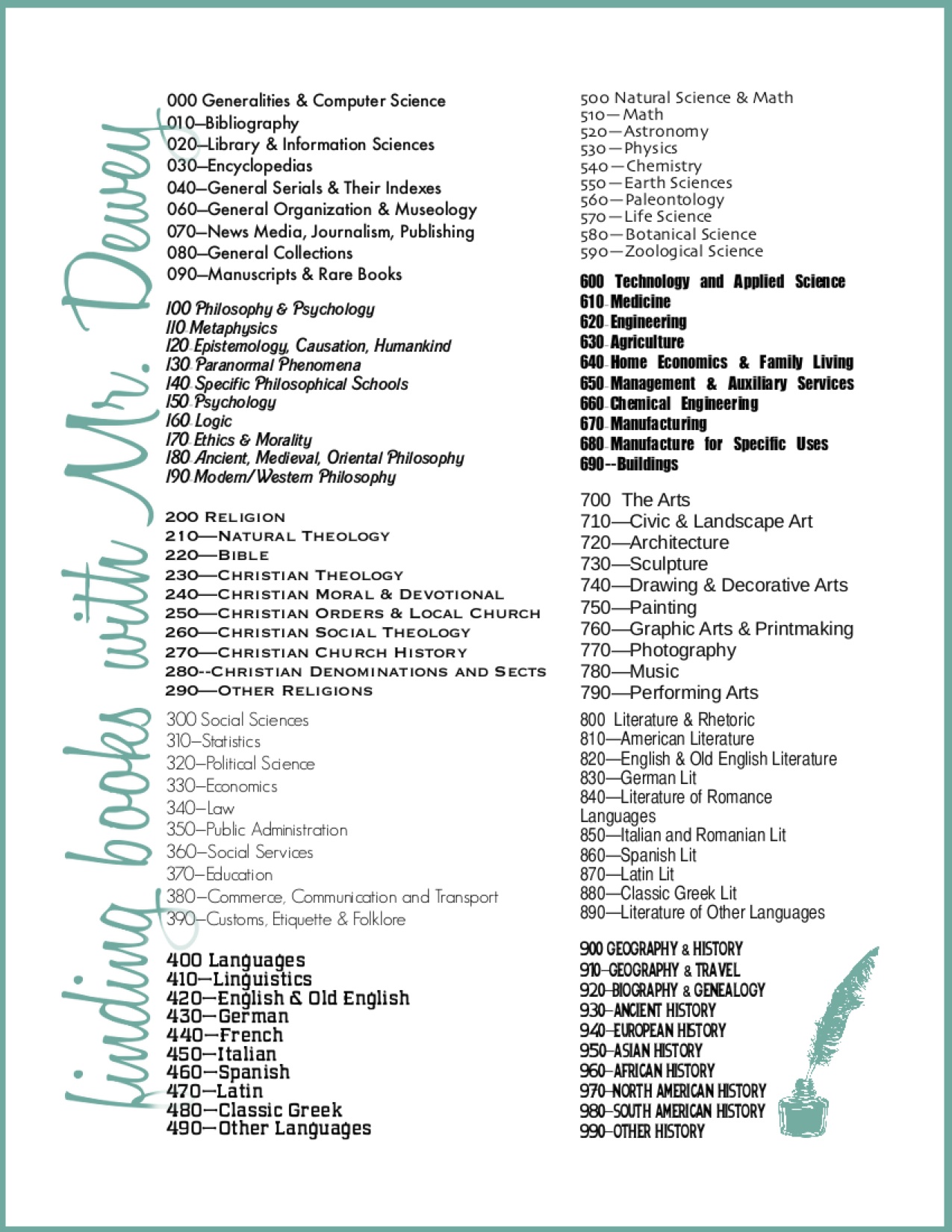
Mr. Dewey amy allender {dot} com
Dewey Decimal Guide Use this chart to learn how the library's books are organized on the shelves! Look at the number next to the subject you are interested in below (for example, 560 for Dinosaurs), then find that number on the library's shelves to find those books. 000 General Knowledge 000 Computers 001 UFOs and the Unexplained 030

8 Best Images of Printable Dewey Decimal System Posters For Free Dewey Decimal Classification
The Dewey Decimal Classification ( DDC ), colloquially known as the Dewey Decimal System, is a proprietary library classification system which allows new books to be added to a library in their appropriate location based on subject. [Note 1] It was first published in the United States by Melvil Dewey in 1876. [1]
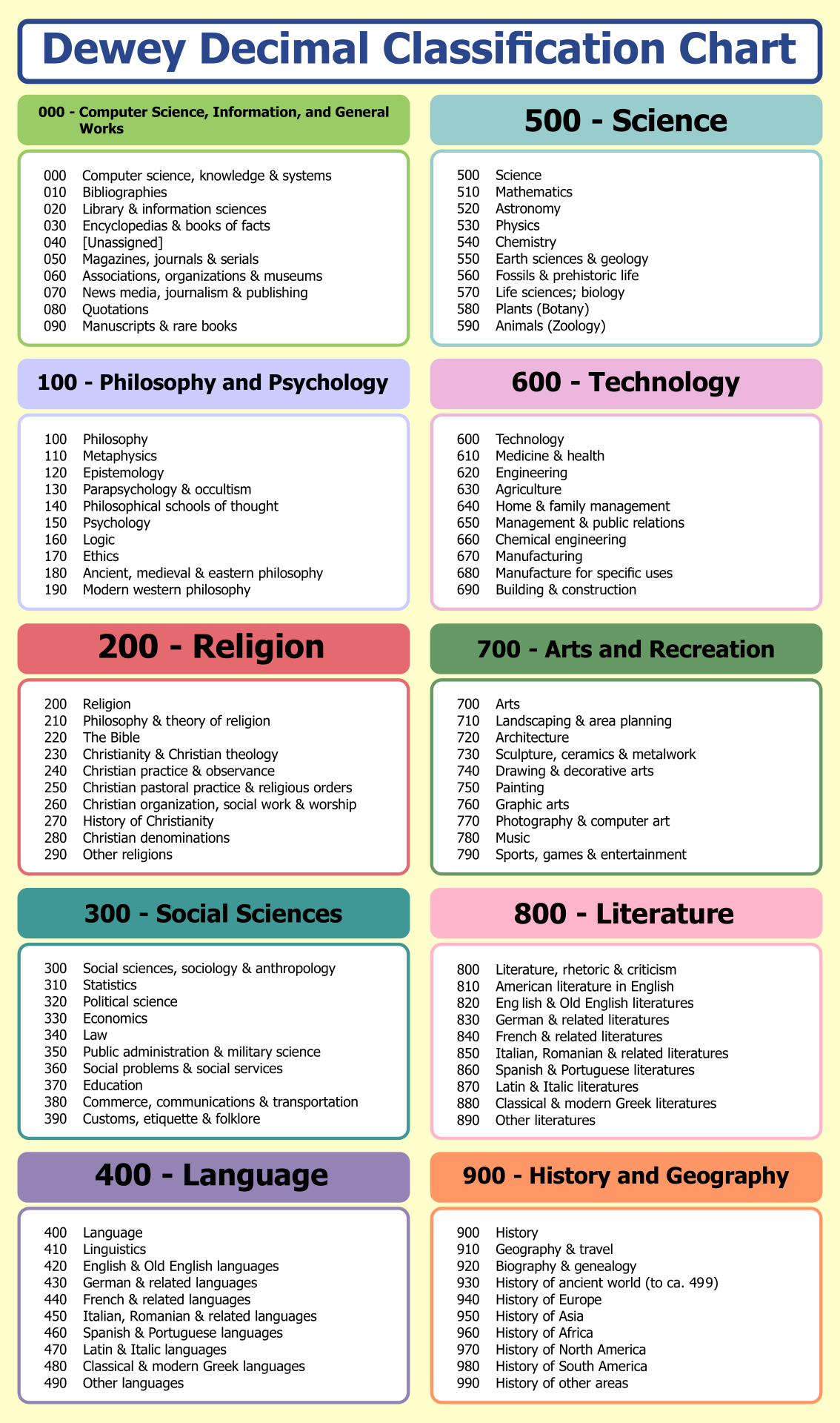
8 Best Images of Dewey Classification Signs Free Printable Dewey Decimal Library
Overview of the Dewey Decimal Classification CONCEPTUALFRAMEWORK 4.1 The DDC is built on sound principles that make it ideal as a general knowledge organization tool: meaningful notation in universally recognized Arabic numerals, well- defined categories, well-developed hierarchies, and a rich network of relationships among topics.
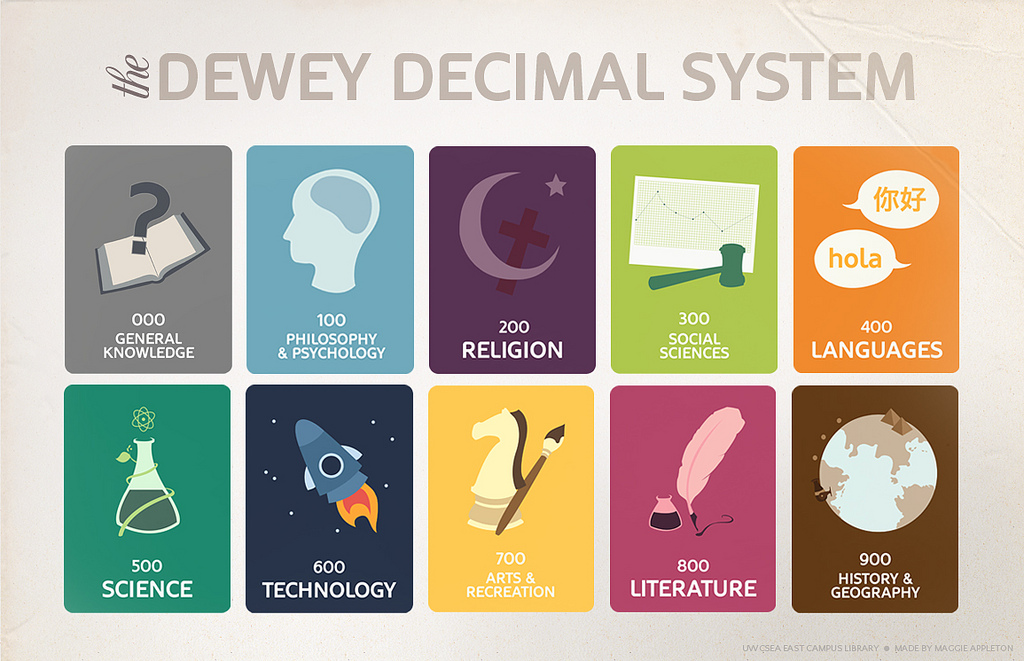
How Dewey Do? December 10th Is Dewey Decimal System Day Public Library
Overview of the 10 Main Classes of Dewey Decimal System. 000-099 100-199 200-299 300-399 400-499. Computers, information, & general works Philosophy & psychology Religion Social sciences Language 500-599 600-699 700-799 800-899 900-999. Science Technology Arts & recreation Literature History & geography.

The Dewey Decimal System Learn About Your Library
The Dewey Decimal Classification (DDC) system is a general knowledge organization tool that is continuously revised to keep pace with knowledge. The system was conceived by Melvil Dewey in 1873 and first published in 1876.
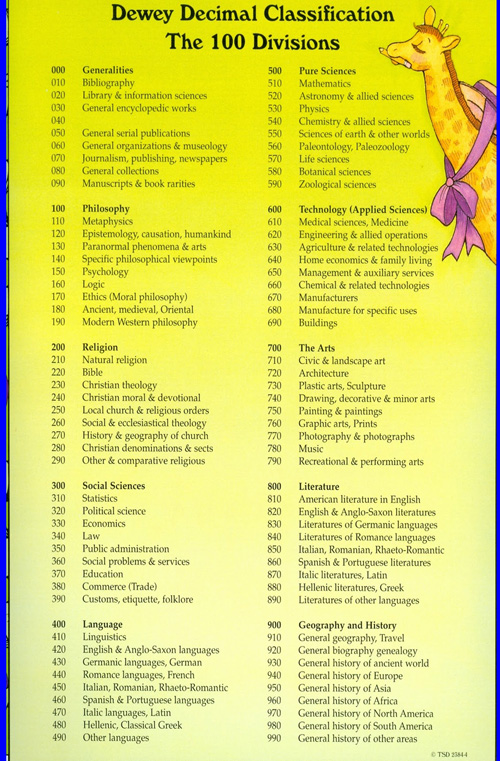
Dewey Decimal System Chart Charles Reed Learning Center
Many public libraries and some other library systems use Dewey Decimal numbers to classify or arrange books and other items in their collections. This call number is like an address which identifies the shelf location of the item. The PCC Library traditionally has arranged its collections using the Dewey system, but is now transitioning to the Library of Congress System.
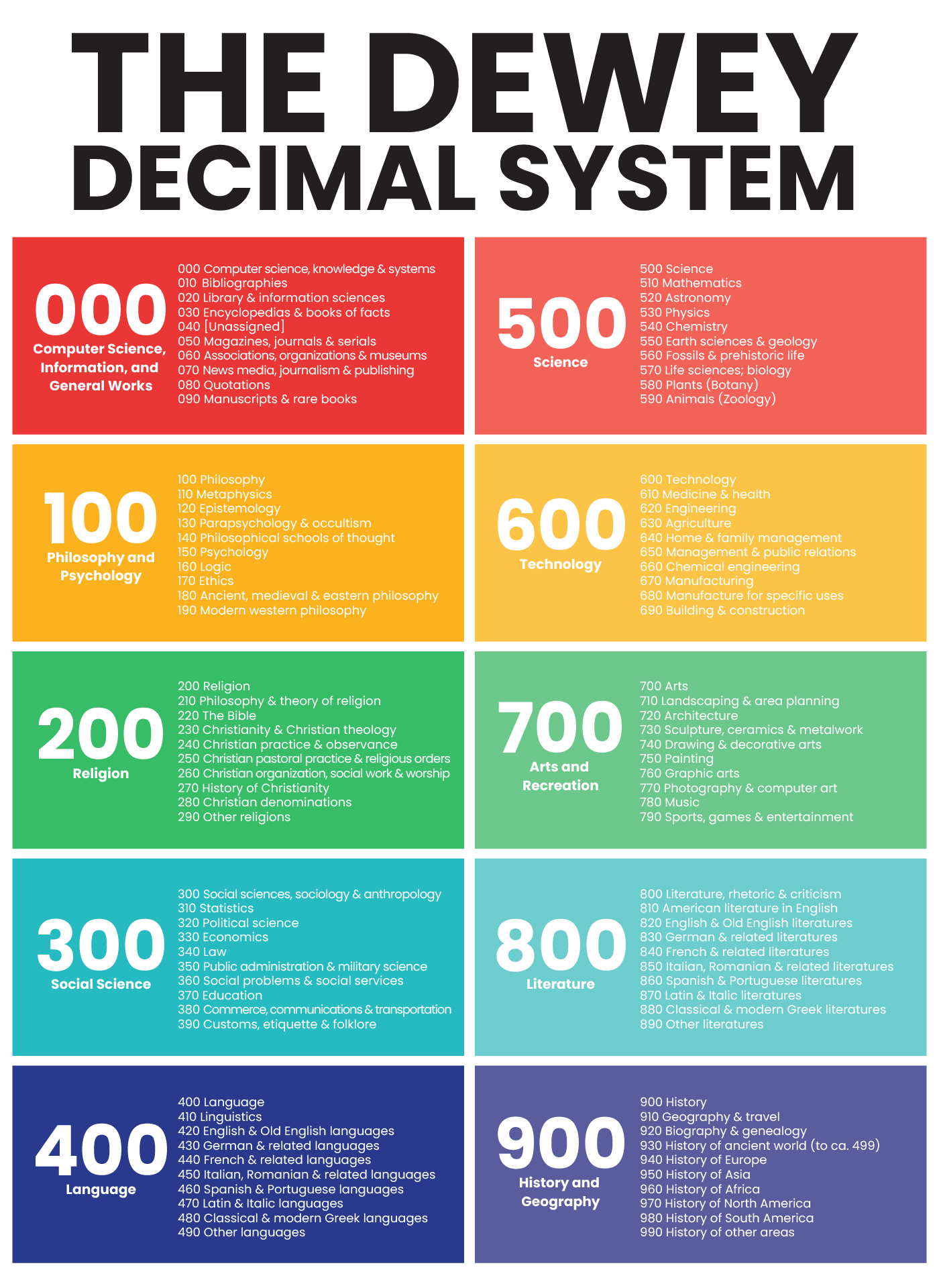
10 Best Printable Dewey Decimal System Posters For Free PDF for Free at Printablee
Melville Dewey created the Dewey Decimal Classification System (DDC) to help library users find books. Under this system, every book is assigned a call number. The call number is like the book's address and is placed on the book's spine. The call number has two components, the DDC number and the Cutter number.

dewey decimal system chart Dewey Decimal Classification by the 100s Edublogs School
Search Standard Number Jump Right In. ISBN (International Standard Book Number) ISSN (International Standard Serial Number) UPC (Universal Product Code). Classify is an OCLC Research prototype that helps you classify books, magazines, movies, and music using the Dewey Decimal Classification system or the Library of Congress Classification system.
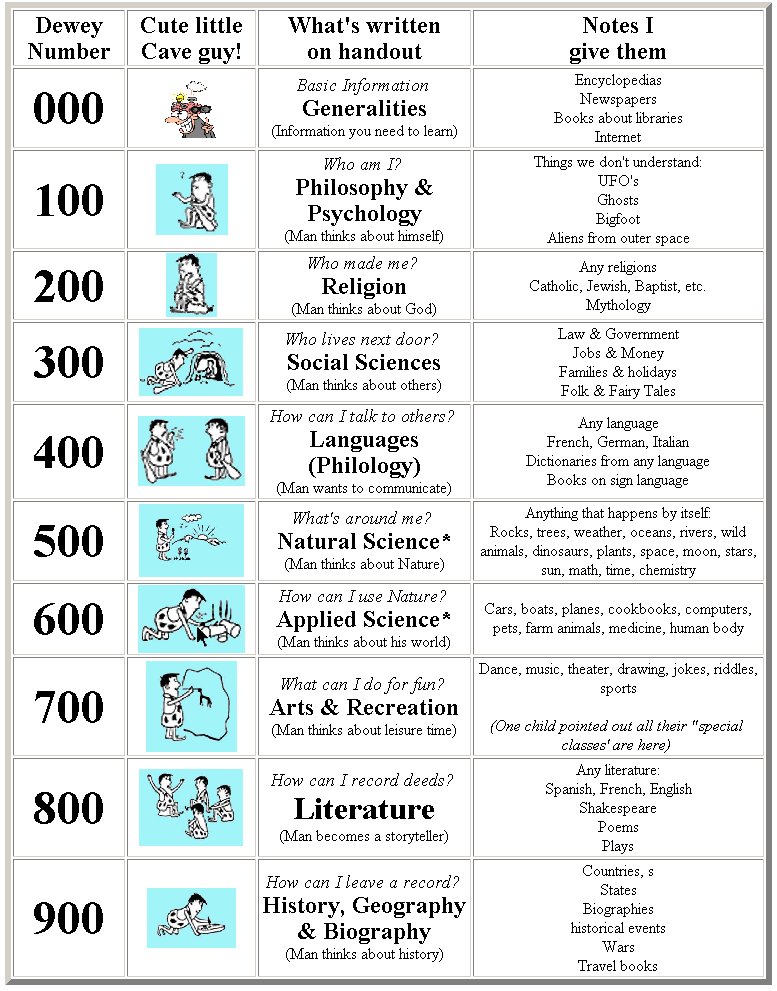
FEU DILIMAN BASIC EDUCATION LIBRARY Dewey Decimal Classification System
The Dewey Decimal Classification (DDC) system, devised by library pioneer Melvil Dewey in 1873 and first published in 1876, and owned by OCLC since 1988, provides a dynamic structure for the organization of library collections. It follows Dewey's division of knowledge into ten broad categories, which in turn are further divided into ten sections.

Listen Research Assistance LibGuides at New St. Andrews College
The Dewey Decimal Classification (DDC) system is a general knowledge organization tool that is continuously revised to keep pace with knowledge. The system was conceived by Melvil Dewey in 1873 and first published in 1876.

Dewey Days Dewey decimal classification, Dewey decimal system, Library classification
Dewey Decimal System Introduction to the Dewey Decimal System, Melvil Dewey, and issues in cataloging and organizing books A summary of the Dewey Decimal System including: the history of the Dewey Decimal System, guides to reading Dewey call numbers, and organizational classes. A PowerPoint further explaining the Dewey Decimal System.

dewey decimal system card Library Dewey & related Pinterest Library ideas, Dewey
Dewey Decimal Classification, system for organizing the contents of a library based on the division of all knowledge into 10 groups, with each group assigned 100 numbers.